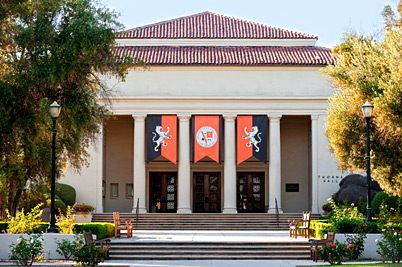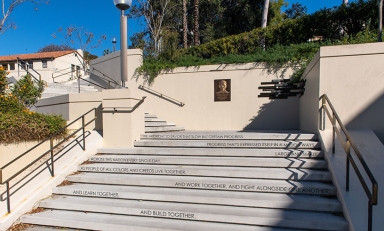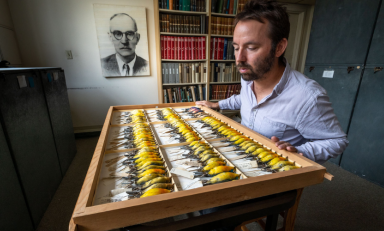
A five-year, $606,191 grant from the National Science Foundation will fund a series of annual grants to talented Occidental math and science majors with financial need—part of the national effort to produce more STEM (science, technology, engineering and mathematics) graduates.
But the new Creating Opportunities in Science and Mathematics for Occidental Students (COSMOS) program is more than just financial aid, according to Ron Buckmire, principal investigator for the grant and professor of mathematics. "We hope to create a national model of effective intervention strategies that can increase the number of STEM graduates by accessing a relatively untapped pool of talent: first-generation, underrepresented and female students," he says.
While the program hopes to broaden recruitment of STEM majors, any student who has financial need and averages a B+ or greater in three STEM courses taken during their first academic year is eligible for COSMOS, he adds.
STEM jobs are growing at 1.7 times the rate of non-STEM jobs, but American schools are not producing enough candidates to fill them. Only 16 percent of high school seniors are interested in pursuing STEM careers, according to the U.S. Department of Education.
This spring, Buckmire and the interdisciplinary COSMOS team—Scott Bogue, associate dean for research and professor of geology; Gretchen North, professor of biology; and Carmel Levitan, associate professor of cognitive science—will recruit the first of three groups of up to eight rising sophomores who plan to major in biology, biochemistry, chemistry, cognitive science, geology, mathematics or physics.
COSMOS scholars will be offered up to $8,000 in scholarships each year and actively mentored by specially trained faculty and student peers from the time they enter the program until they graduate. They will participate in such existing high-impact practices as Oxy’s summer research program, supplemental instruction and community outreach opportunities.
Some 85 percent of the grant money will go directly to students, with the rest supporting mentoring and other program activities. "This is very unusual because generally in federal grants there’s some fraction of the funding that goes directly to the college—what’s called overhead—and that can be as high as 50 percent," Buckmire says.
While the grant money will run out one year before the last group of eight students graduates, the Admission and Financial Aid Office has guaranteed that the remaining scholarship money will be in their financial aid packages, according to Buckmire.
Another option is going back to the NSF for another grant, this time incorporating results from COSMOS’ robust evaluation plan that will be implemented by an independent evaluator. "There are multiple articulated metrics, outcomes and quantifiable data that will be used to measure our results," Buckmire said.
To help prime the pump, Levitan and North created a first-year seminar, "Experiencing Mathematics and Science," which was offered this fall for students who are beginning to explore a possible STEM major. (Participation in the class is not necessary to be a successful COSMOS applicant.)
Buckmire, who served as an NSF program officer during a 2011-13 leave from Occidental, returned from Washington, D.C., convinced that Oxy should apply for a grant of this kind. "Oxy has done very well in getting NSF grants generally, and I came back with a good idea of what we would need to do to get a competitive proposal through the process," he says.



